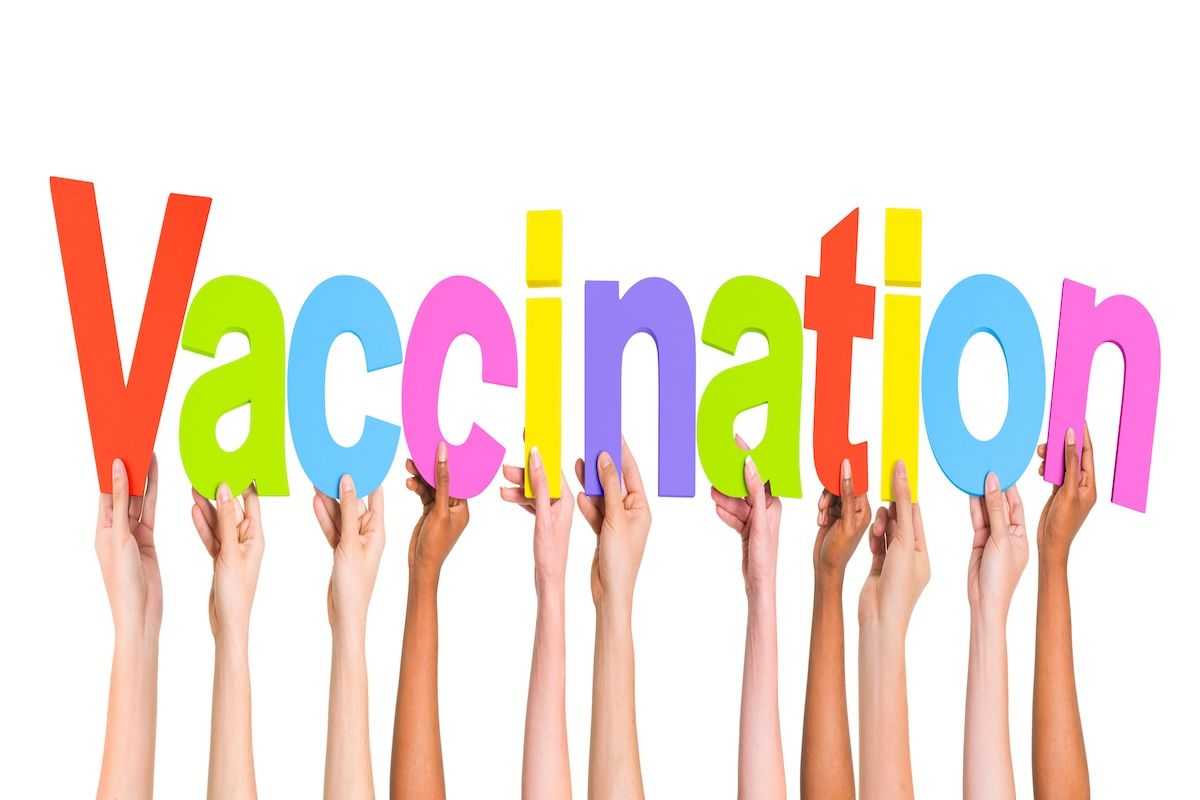Article
The Race Against Antibiotic Resistance: Addressing a Growing Public Health Crisis
Author(s):
When antibiotics were discovered, they were considered a miracle. Decades of overuse have created a current public health crisis with a growing number of antibiotic-resistant bacteria. However, not all hope is lost in the fight against antibiotic resistance. There are programs in place to promote judicious use of antibiotics and policies and funding to help incentivize development of new antibiotics.
The discovery of antibiotics was considered a miracle that underpinned modern medicine as we know it today, but growing antibiotic resistance threatens that progress.
Every year, 2 million Americans are infected with an antibiotic-resistant bacteria, with at least 23,000 people dying from the bacteria.1 Each year, there are more and more examples of patients who can no longer be treated safely and effectively with antibiotics or of doctors who are revisiting older antibiotics, whose use was discontinued due to side effects, because they are the only options available, explained David Hyun, MD, senior officer, Antibiotic Resistance Project, The Pew Charitable Trusts.
In general, antibiotics have been very good tools in clinicians’ arsenal. Dennis Gingrich, MD, FAAFP, professor, Department of Family and Community Medicine, Department of Humanities, Pennsylvania State College of Medicine, called them a “godsend in treating infections” that saved a lot of lives over the years. But as new antibiotics have been discovered, bacteria have developed resistance to these new antibiotics.
How quickly do bacteria develop a resistance to an antibiotic after it’s developed? Almost immediately, according to Jason Burnham, MD, instructor in medicine, John T. Milliken Department of Internal Medicine, Division of Infectious Diseases, Washington University School of Medicine in St. Louis.
“Basically, as soon as you develop new things, new antibiotic resistance comes out,” he said. “And the number of patients who have antibiotic-resistant bacteria infections just increases year after year after year.”
Research from Pew2 has found that 1 in 3 antibiotics prescribed in the outpatient setting are unnecessary, Hyun said. Furthermore, about three-quarters of that unnecessary use was associated with visits for acute respiratory conditions, which are usually viral in nature and for which antibiotics are not indicated.
“The acute respiratory conditions appear to take up the lion’s share of the amount of unnecessary prescribing that is currently happening in the outpatient space,” Hyun said.
Genetic Drift Is to Blame
When bacteria are exposed to an antibiotic, most of them are killed off because they are sensitive to the antibiotic; but a few of the bacteria develop mutations that make them resistant. The bacteria transmit genetic elements from one to the other, which means the growth of resistant bacteria is rapid, Gingrich explained.
“So, really, genetic drift is what leads to the resistant bacteria,” he said. “And infections caused by antibiotic-resistant bacteria are difficult to treat.”
The increasingly difficult-to-treat issue of antibiotic resistance has become a public health hazard. Gingrich called it a “crisis” and even noted that it is similar to the opioid crisis in terms of the need to generate public awareness and change prescribing patterns to reduce the use of inappropriate antibiotic use.
Resistance to antibiotics has grown for a number of reasons, one of which is overprescribing in humans. Burnham explained that overprescribing has happened because of diagnostic uncertainty. While healthcare providers have gotten better at diagnosing a patient, for years it had been a guessing game, he said.
“It was like, ‘Hmm, well, I know if I give you an antibiotic, if you have a bacteria, you’ll get better,’” Burnham said. “A lot of times providers are thinking antibiotics are probably not harmful, so let’s just give.”
Recent research has found, however, that there are side effects associated with antibiotics. Burnham noted that one of the top reasons children have been going to the emergency department is because they have a viral infection, but they were given an antibiotic, and as a result they have a rash or other reaction.
“So, they’re not benign, but there’s this still overarching assumption that it’s no big deal to give an antibiotic,” he said.
Burnham also pointed toward physician ratings as another reason for overprescribing of antibiotics. A 2018 study in JAMA Internal Medicine found that receiving an antibiotic, even if it was not needed, resulted in patients being more satisfied with their physician.2
According to Gingrich, better patient—physician relationships might help mitigate that issue. When primary care physicians have a relationship with patients, patients tend to trust their physician when they are told they do not need an antibiotic, even if they went to the appointment expecting they would get an antibiotic, he said. Recent research in Annals of Internal Medicine seems to support this.3 The paper showed that shorter physician encounters were associated with antibiotic prescribing—when physicians spent more time speaking with their patients, they were more likely to prescribe something other than an antibiotic.
Kathy Talkington, project director, Antibiotic Resistance Project, The Pew Charitable Trusts, added that while the possibility of antibiotic resistance was known when antibiotics were developed, the concept wasn’t drilled into people’s heads.
“I don’t think it was readily acknowledged both in the public and in providers,” she said. “And they didn’t recognize or didn’t focus on some of these consequences of overusing antibiotics.”
Providers were giving out antibiotics because they were seen as an easy fix and the public was expecting them, she added. The public wanted antibiotics because they were under pressure to get better so they could get back to work or get their kids better so they could go back to school.
Patient behavior, such as not taking the full course of antibiotics as directed, didn’t help. Sometimes, patients used other people’s leftover antibiotics or stopped taking their own if they were feeling better hoping to save them for another time.
“These practices will increase the risk of antibiotic resistance by allowing the bacteria to be exposed to short ineffective courses of antibiotics that really just generate antibiotic resistant bacteria,” Gingrich explained.
However, humans aren’t the only culprits. There is also overuse of antibiotics among animals, animal feed, and crops, Burnham said. These antibiotics get into the soil and the groundwaters, and “antibiotic resistance just spreads throughout the ecosystem.”
The result is that certain antibiotics can no longer be used for certain infections, Burnham explained. Usually, there’s a niche for particular antibiotics, but “over time, the niches are getting smaller and smaller and smaller, so there’s fewer and fewer infections and bacteria that the antibiotics can be used for.”
As bacteria become more resistant to more antibiotics, they develop into what is being called “superbugs.” The definition of a superbug is really a moving target, Burnham noted, as there is no cutoff for what defines a superbug. What is taken into account when determining if something is a superbug is how widespread the bacteria is, how easy it is to spread, and how difficult it is to treat.
Some bacteria that are commonly considered superbugs include carbapenem-resistant Enterobacteriaceae and anything gram-positive that is resistant to vancomycin and daptomycin, Burnham said.
Responding to Growing Antibiotic Resistance
With so many factors leading to overprescribing of antibiotics and the growth of antibiotic resistance, combating the issue will truly require a culture change among both providers and patients. According to Gingrich, “that culture change is already underway.”
The American Academy of Family Physicians, for which Gingrich is on the board of directors, has published a few Choosing Wisely recommendations relating to antibiotic use, including not routinely prescribing antibiotics for mild to moderate sinus infections unless the symptoms last for 10 days or more or they worsen after initially improving, or not using antibiotics in ear infections that are not very severe in children ages 2 to 12.
The CDC, hospitals, medical societies, and others are promoting antibiotic stewardship programs, which include strategies to promote a more judicious use of antibiotics. Stewardship does not mean never prescribing an antibiotic, Gingrich explained.
“Because antibiotics can be very useful, in fact lifesaving, in some situations,” he said. “It really involves knowing and practicing when to use the appropriate antibiotic. The best way to describe it is really prescribing the right drug at the right dosage for the right duration of time.”
In 2017, The Joint Commission implemented new standard requirements that hospitals need to have an antibiotic stewardship program to meet accreditation,5 Hyun explained. The CDC is also keeping track of progress being made to implement programs. However, this is just the early stages. While there is momentum with implementing antibiotic stewardship programs, they still need to be measured to ensure the programs are meaningful and actually achieving their intended outcome: reducing inappropriate antibiotic use and the level of antibiotic resistance.
Talkington added that there is a policy at the federal level that has yet to be finalized but would mandate that in order to participate in Medicare, hospitals have to have certain activities in place, including an antibiotic stewardship program.
Making changes in the outpatient setting has remained more challenging. Hyun explained that the lack of incentives for the outpatient provider coupled with competing priorities has made it difficult to prioritize antibiotic stewardship.
“The payers—both public and private—will likely have a role in this to incorporate antibiotic stewardship into their quality improvement activities and reimbursement models to further incentivize [outpatient providers] and hopefully move the needle forward,” he said. “That could further accelerate the uptake of antibiotic stewardship activities in the outpatient setting.”
More antibiotics also need to be developed—it has been more than 30 years since a new class of antibiotic drugs has been developed, Talkington said. There is a cost—benefit analysis challenge for companies developing antibiotics. Not only is the science difficult, which means investing a lot of time and money, but if a new antibiotic is approved, it is going to be used sparingly.
“…Society is, for obvious reasons, going to hope that that drug is not used very much, and there will be programs in place such as stewardship programs to ensure that that is put in a secure place and saved for when it’s absolutely necessary,” she said.
There are conversations about how to better incentivize development of antibiotics using push and pull incentives. On the push side, which takes place on the research side before the drug gets to market, there is research money at the National Institutes of Health and the Combating Antibiotic Resistant Bacteria (CARB-X) accelerator program, which is a public—private global partnership with funding from HHS as well as foreign governments. The goal of CARB-X is to provide funding to companies with promising developments.
On the pull side, there are discussions, although no clear solutions, around what economic incentives can be put in place to convince companies to keep their antibiotic development programs going. Both Talkington and Burnham noted that recently more than 1 company has closed its antibiotic development program because it was not profitable.
Funding issues are also affecting research into alternatives to antibiotics, Burnham said, such as into monoclonal antibodies, which activate the immune system and attack the bacteria.6,7 Another potential area of research is into phage therapy.8 While there have been some successful cases of using phage therapy to kill off antibiotic-resistant bacteria infections, it doesn’t always work and phage therapy is not easy to access.
A Future Without Antibiotics Is a Return to the Past
Everyone is really affected by growing antibiotic resistance, but there are some populations who are more impacted, such as patients who have a compromised immune system, whether through their genetics or because they are receiving chemotherapy. Newborns will also be more affected, as well as patients hospitalized for any reason.
“What we’re worried about is we have become very reliant upon these amazing drugs and what you can envision is what the world was like before antibiotics were created,” Talkington said. “In which case, even a scratch or an ear infection could be deadly. There was no available effective treatment for what we would now consider sort of minor infections.”
Surgeries without antibiotics will be dangerous, because every time a person is cut into there is a high risk of infection, Burnham said. Some surgeries will still happen, because they are necessary, but elective surgeries, even ones on hernias, which are uncomfortable and unsightly but not life threatening, might no longer happen.
Without antibiotics, there will be a lot fewer surgeries. It will also become harder to give a person chemotherapy, because the patient could die from infections they get as a result of immunosuppression, Burnham explained. Providers might decide the risk of organ transplants is too high, and patients might die of the underlying condition that might an organ transplant necessary.
“I think our medical system looks very different,” Talkington said.
Luckily, we’re not past the point of return. The bacterial genetic drift Gingrich discussed that explains how bacteria are becoming increasingly resistant to antibiotics goes both ways.
“If we cut back on the antibiotics that we use, then more bacteria will grow that are sensitive to antibiotics, and then we may be able to use some of the more common antibiotics in a wider set of circumstances again,” Gingrich said.
References
1. Centers for Disease Control and Prevention. Antibiotic/antimicrobial resistance (AR/AMR). CDC website. cdc.gov/drugresistance/index.html. Updated September 10, 2018. Accessed April 11, 2019.
2. The Pew Charitable Trusts. Antibiotic use in outpatient settings. Pew website. pewtrusts.org/en/research-and-analysis/reports/2016/05/antibiotic-use-in-outpatient-settings. Published May 3, 2016. Accessed April 12, 2019.
3. Martinez KA, Rood M, Jhangiani N, Kou L, Boissy A, Rothberg MB. Association between antibiotic prescribing for respiratory tract infections and patient satisfaction in direct-to-consumer telemedicine. JAMA Intern Med. 2018;178(11):1558-1560. doi: 10.1001/jamainternmed.2018.4318.
4. Martinez KA, Rood M, Jhangiani N, Boissy A, Rothberg MB. Antibiotic prescribing for respiratory tract infections and encounter length: an observational study of telemedicine. Ann Intern Med. 2019;170(4):275-277. doi: 10.7326/M18-2042.
5. The Joint Commission. Approved: new antimicrobial stewardship standard. The Joint Commission website. jointcommission.org/assets/1/6/New_Antimicrobial_Stewardship_Standard.pdf. Published July 19, 2016. Accessed April 12, 2019.
6. Oleksiewicz MC, Nagy G, Nagy E. Anti-bacterial monoclonal antibodies: Back to the future? Arch Biochem Biophys. 2012;526(2):124-131. doi: 10.1016/j.abb.2012.06.001.
7. Saylor C, Dadachova E, Casadevall A. Monoclonal antibody-based therapies for microbial diseases. Vaccine. 2009;27(Suppl 6):G38-G46. doi: 10.1016/j.vaccine.2009.09.105.
8. Lin DM, Koskella B, Lin HC. Phage therapy: an alternative to antibiotics in the age of multi-drug resistance. World J Gastrointest Pharmacol Ther. 2017; 8(3):162-173. doi: 10.4292/wjgpt.v8.i3.162.
Newsletter
Stay ahead of policy, cost, and value—subscribe to AJMC for expert insights at the intersection of clinical care and health economics.




